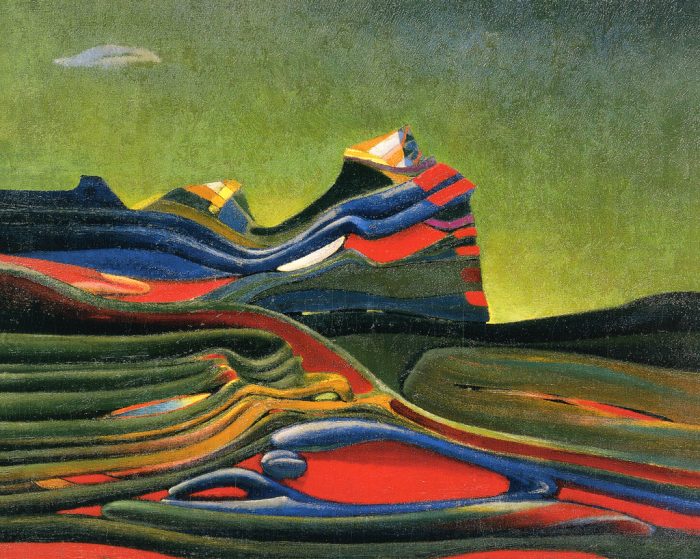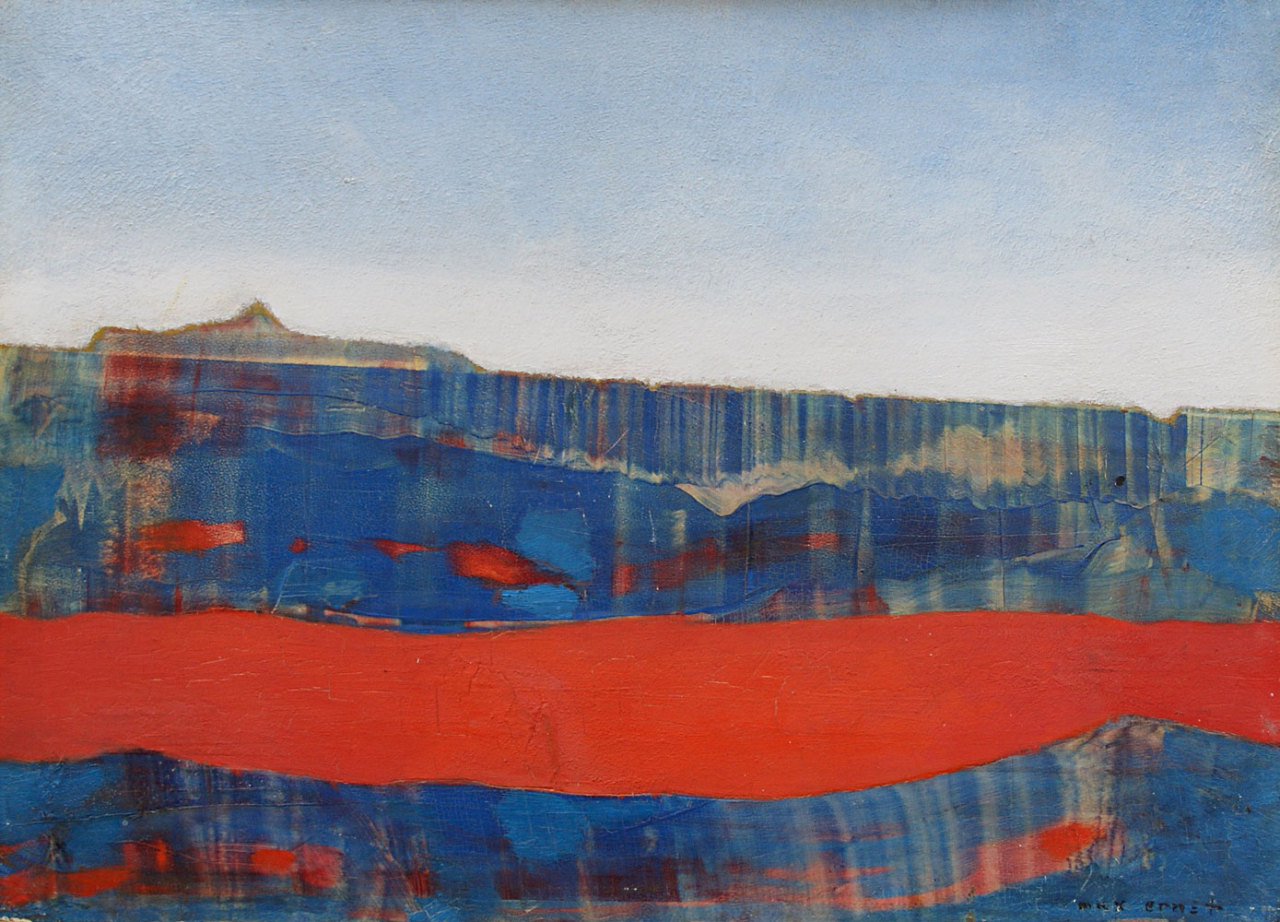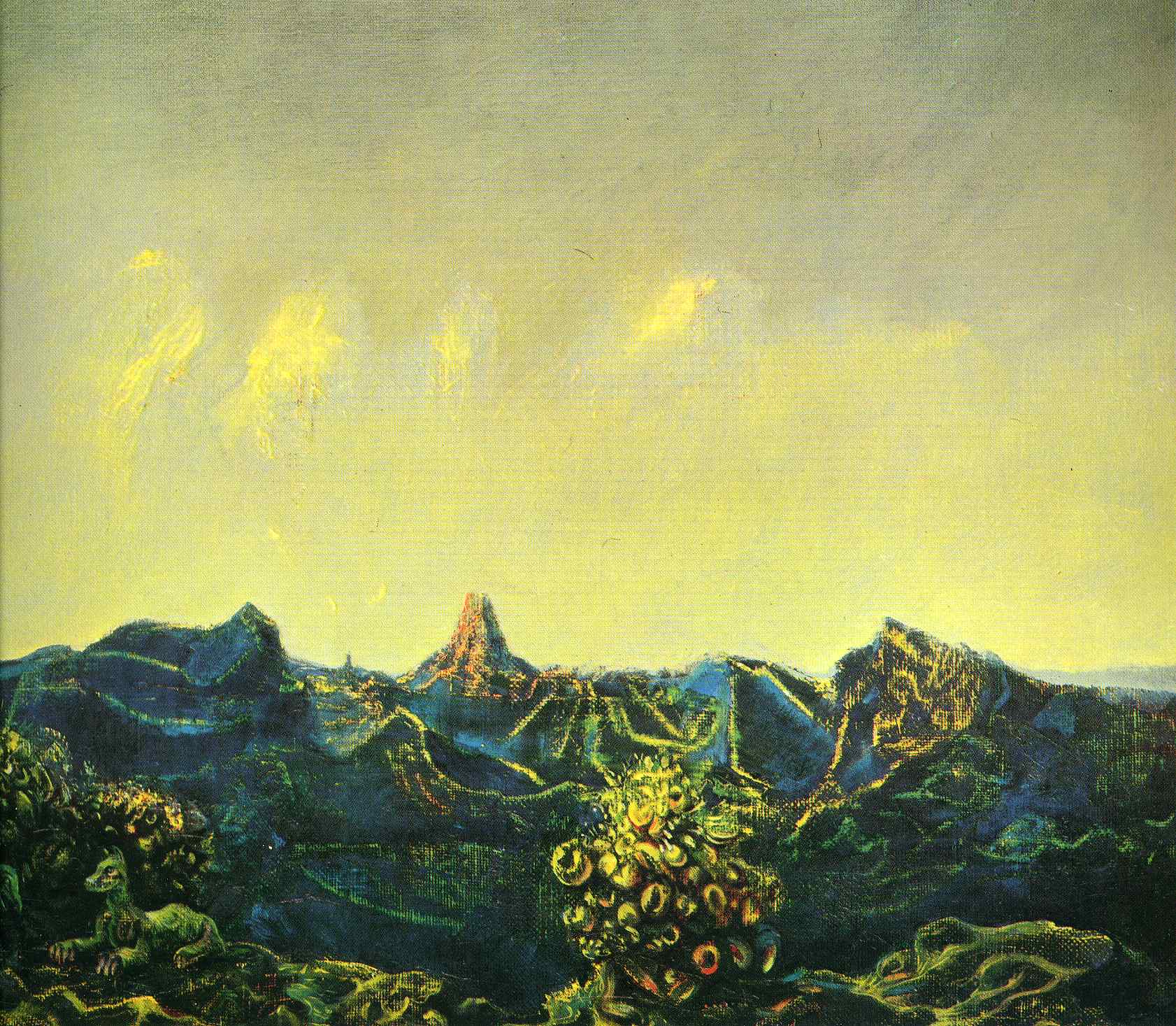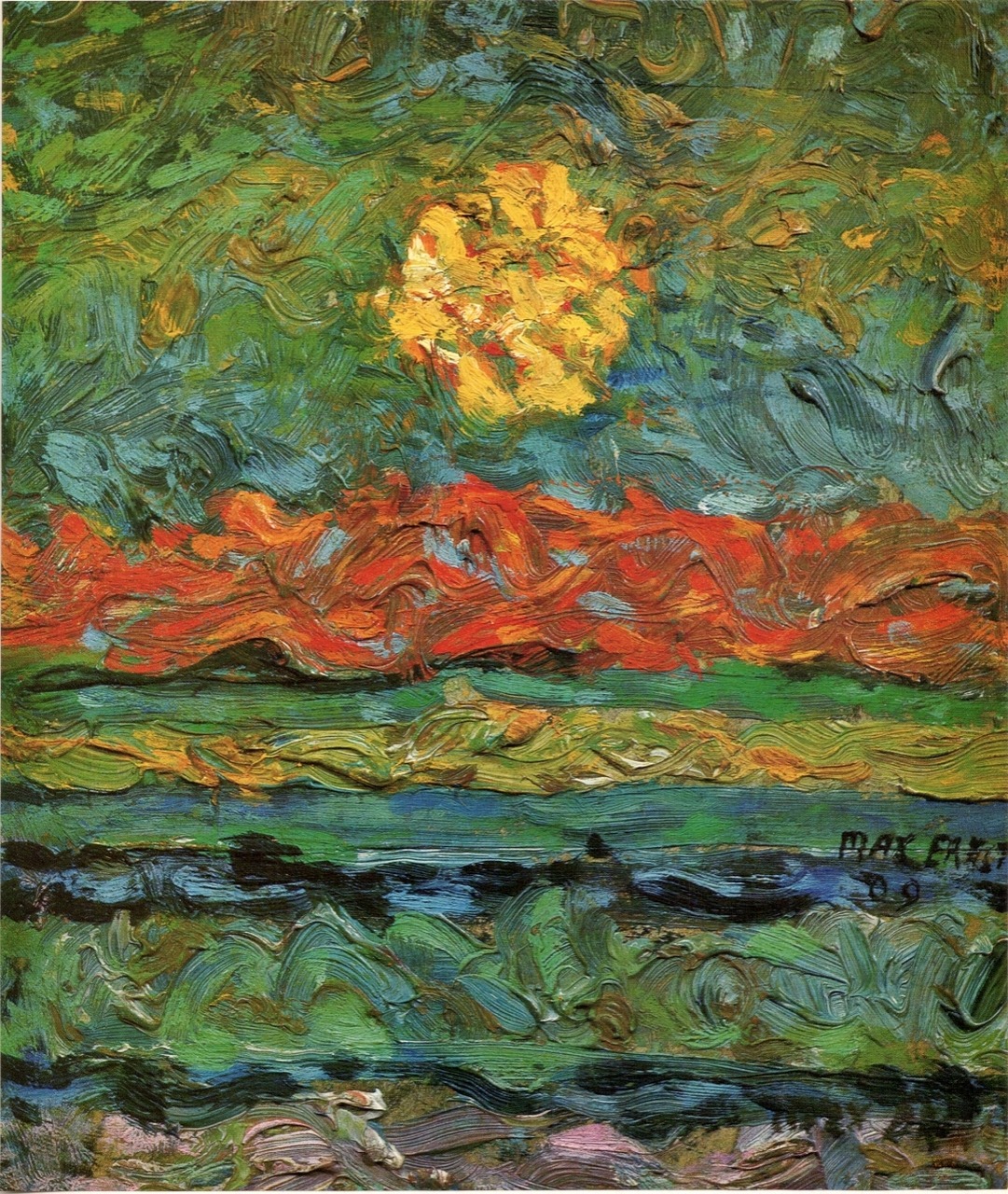
'Der einbalsamierte Wald', öl auf leinwand von Max Ernst (18911976, Germany) Max Ernst
Max Ernst (2 April 1891 - 1 April 1976) was a German (naturalised American in 1948 and French in 1958) painter, sculptor, printmaker, graphic artist, and poet. A prolific artist, Ernst was a primary pioneer of the Dada movement and Surrealism in Europe. He had no formal artistic training, but his experimental attitude toward the making of art resulted in his invention of frottage—a.

The Mind Altering Art Work Of MAX ERNST CVLT Nation
June 22, 2023. "Europe After the Rain II" is a thought-provoking and enigmatic painting created by German artist Max Ernst in 1940-1942. This abstract masterpiece offers a haunting vision of a post-apocalyptic Europe, filled with surreal and dreamlike imagery. In this article, we will explore the intriguing elements and symbolic significance of.

Paysage avec lac et chimères von Max Ernst (18911976, Germany)
Max Ernst, Europe after the Rain II, 1941. Europe After the Rain II depicts an abstract, apocalyptic landscape, reminiscent of classical paintings of ruins. In the center of these ruins stands a creature, half-man and half-bird, wielding a spear at a green woman, whose back is turned to him and the viewer. This surreal, multicolored landscape.
.jpg)
Max Ernst (18911976) , Aux antipodes du paysage Christie's
Max Ernst has the sun set in a mysterious, nocturnal forest landscape. Find out in what way this artwork is relevant to the artist's childhood. From the podc.
.jpg)
Max Ernst (18911976) , Paysage Christie's
German-born Max Ernst was a provocateur, a shocking and innovative artist who mined his unconscious for dreamlike imagery that mocked social conventions. A soldier in World War I, Ernst emerged deeply traumatized and highly critical of western culture. These charged sentiments directly fed into his vision of the modern world as irrational, an.

VISION (Max Ernst (German, 1891 1976) Grand paysage...)
Max Ernst (2 April 1891 - 1 April 1976) was a German painter, sculptor, graphic artist, and poet. A prolific artist, Ernst was a primary pioneer of the Dada movement and Surrealism . Max Ernst was born in Brühl, near Cologne, the third of nine children of a middle-class Catholic family. His father Philipp was a teacher of the deaf and an.
Landschaft mit Weizenkeim, 1936 von Max Ernst (18911976, Germany)
Max Ernst-Kenner Helmut R. Leppien nähert sich in einem Überblick dem Landschaftsmotiv bei Max Ernst, während die beiden Kuratoren Martin Faass und Andrea Fromm ihre Überlegungen u.a. der Beziehung zur romantischen Landschaft sowie den seriellen Arbeitsmethoden Max Ernsts widmen.

Pin auf Wald
Max Ernst (2 April 1891 - 1 April 1976) was a German (naturalised American in 1948 and French in 1958) painter, sculptor, printmaker, graphic artist, and poet. A prolific artist, Ernst was a primary pioneer of the Dada movement and Surrealism in Europe. He had no formal artistic training, but his experimental attitude toward the making of art.

Max Ernst The Entire City (1935) Echo Art, Max Ernst Paintings, Max Ernst Artwork, Oil Canvas
The forest is a recurring theme in German art in general, and specifically in the paintings of the surrealist master Max Ernst during the late twenties and early thirties. Ernst made many different works based on the forest and all have common elements: a dense wall of tall trees, a perfect circle representing the rings of light from the.

Max Ernst Epiphanie (Dream landscape), 1940. Dream landscape, Max ernst, Landscape
Sedona, Arizona: Imagined landscapes. Max Ernst at home in Sedona, Arizona. Long before Max Ernst ever laid eyes on the fantastic landscapes of the Sedona desert in Arizona, he had already dreamed of it in his paintings. Persecuted in France for being German and by Nazi Germans for being anti-Nazi, Ernst was forced to leave Europe during World.

KDS Photo, Dusseldorf K20 gallery, oil painting by Max Ernst "Landscape with sprouting corn
Max Ernst (1891 - 1976) The Forest (La Forêt) 1927-28 Oil on canvas 96.3 x 129.5 cm Peggy Guggenheim Collection, Venice (Solomon R. Guggenheim Foundation, New York) 76.2553 PG 72. Not on View Other artworks. Max Ernst. Attirement of the Bride. 1940. On view Max Ernst. The Postman Cheval.

Max Ernst Sedona Landschaft
Trenchant, cruel, ironic, sarcastic, and poetic—such is the mercurial practice of the German-born, perennially nomadic Max Ernst.Ernst's own biography highlights the tumult of the early 20th century: he fought in World War I, was condemned for his art by the Nazis, was interned in a prison camp and escaped to the U.S. with the help of art patron and collector Peggy Guggenheim.

Antipodes of Landscape Max Ernst
Ohne titel (Sedona Landschaft) (around 1957) by Max Ernst. Bonhams, New York, 14 November: Impressionist and Modern Art . Est $500,000-$700,000.

victorian quack landschaft mit sonne, max ernst, 1909 a centaury...
Ohne titel [Sedona Landschaft] is a powerful expression of Max Ernst's reaction to the dramatic Arizona landscape, one of the most significant discoveries of his years in the United States. It was presented by the artist to Dr. Kenneth Brilhart, chief of staff at the local hospital in Cottonwood, in the year it was painted, and has remained in Arizona ever since.

Innovation technique Max ernst, Max ernst paintings, Landscape
According to Ernst (1891-1976), when he was a little boy he had occasional nightmares of figures emerging from the patterns on the door of the veneered cupboard at the foot of his bed. About 10.

Max Ernst Natur im (La nature à l‘aurore). Max ernst, Max ernst paintings
Brühl, Germany, 1891-Paris, 1976. Max Ernst was an artist active in Germany, France, and the United States. Throughout his career, he participated in Dada and Surrealism and was closely associated with an international network of artists, writers, and collectors. He shared with many of his contemporaries an abiding interest in Indigenous and.